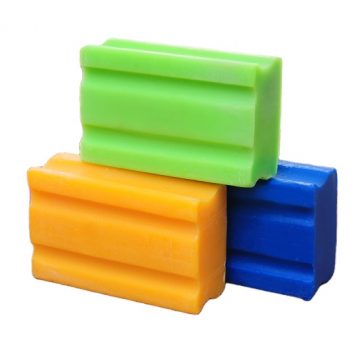
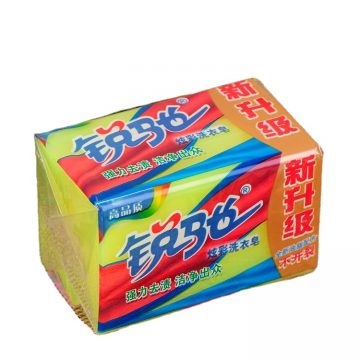
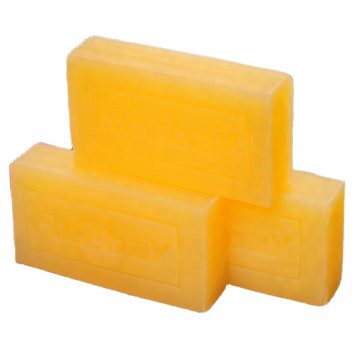
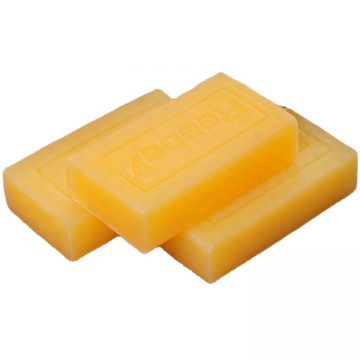
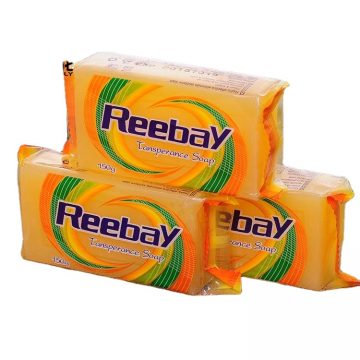
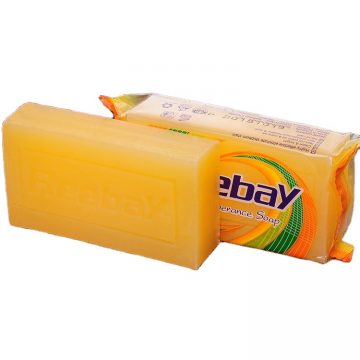
|
Type
|
Laundry Soap
|
|
Form
|
Solid
|
|
Ingredient
|
Chemical
|
|
Main Ingredient
|
coco oil,palm kernel oil,
|
|
Age Group
|
Adults
|
|
Feature
|
Basic Cleaning, ANTISEPTIC, Whitening, Slimming
|
|
Place of Origin
|
China
|
|
TFM
|
45% -84% content
|
|
Colour
|
Bule ,White,Red or customized
|
|
Weight
|
228g,350g,400g,500g
|
|
Feature
|
Basic Cleaning,Antiseptic,Whitening
|
|
Ingredient
|
palm oil,plant oil,vegetable oil soap
|
|
Series
|
washing soap,lothes soap,laundry soap,transparent soap
|
|
Package
|
Opp film wrapper with carton box
|
|
Certification
|
ISO approved
|
|
Used
|
Appared,Daily Household soap
|
Laundry soap:
According to the light industry standard QB/T 2486-2008 of the People’s Republic of China, laundry soap is divided into type I and type II according to the content of dry sodium soap. Type Ⅰ: dry sodium soap content ≥ 54%; type Ⅱ: 43% ≤ dry sodium soap content <54%. In order to improve the detergency, fillers such as water glass or soda ash are often added. Mainly used for laundry washing. Co-cooking appropriately matched fats (sometimes with rosin) and caustic soda, saponification, salting out, washing, finishing and other processes to make soap base, and then through the processes of blending, condensation (forming), cutting, printing and other processes to make soap nuggets . The raw materials of soaps come from the salts produced by animal and vegetable fats, fatty acids and alkalis. They are easily biodegradable, have less irritation to the human body, and have less water pollution, which is much less polluted than general chemical synthetic detergents. Some people often take “soap is alkaline and washing powder is acid” as the basis, and think that the two should not be mixed, otherwise the acid and alkali will neutralize the effect of decontamination.
Laundry soap introduction:
Wash clothes with soap. Co-cooking properly matched fats (sometimes with rosin) and caustic soda, saponification, salting out, washing, finishing and other processes to make soap base, and then through the process of blending, condensation (forming), cutting, printing and other processes to make soap nuggets . The main forming methods are cold plate method and vacuum condensation method. According to different fatty acid content, laundry soap is divided into type I and type II. Type Ⅰ: dry sodium soap content ≥ 54%; type Ⅱ: 43% ≤ dry sodium soap content <54%. Laundry soap is a bar or bar soap with fatty acid sodium as the main component, which is mainly used for laundry washing.
Product Description:
Laundry soap is a block or bar-shaped hard soap, and the main component is fatty acid sodium salt. In addition, laundry soap also contains builders, fillers, etc. Such as sodium carbonate, zeolite, coloring agent, transparent agent, lime soap dispersing agent, perfume, fluorescent whitening agent, etc. Laundry soap is an alkaline detergent, and its aqueous solution is alkaline. Its detergency is strong, the foam is moderate, and it is easy to try. The disadvantage is that it is not resistant to hard water and will produce soap scale when washed in hard water.
Classification:
Laundry soap is a traditional laundry product. It is a sodium salt of fatty acid produced after a series of reactions between animal fat or vegetable fat and caustic soda. It is a typical anionic surfactant. Domestic enterprises dominate the process of boiling soap in a large pot; internationally, two processes of oil hydrolysis-continuous neutralization of fatty acids and continuous saponification are mainly popular. my country’s soap making companies are mostly located in Shanghai, Guangdong, Fujian and other places, and their raw material palm oil is mainly imported from Southeast Asian countries such as Malaysia and Indonesia.





